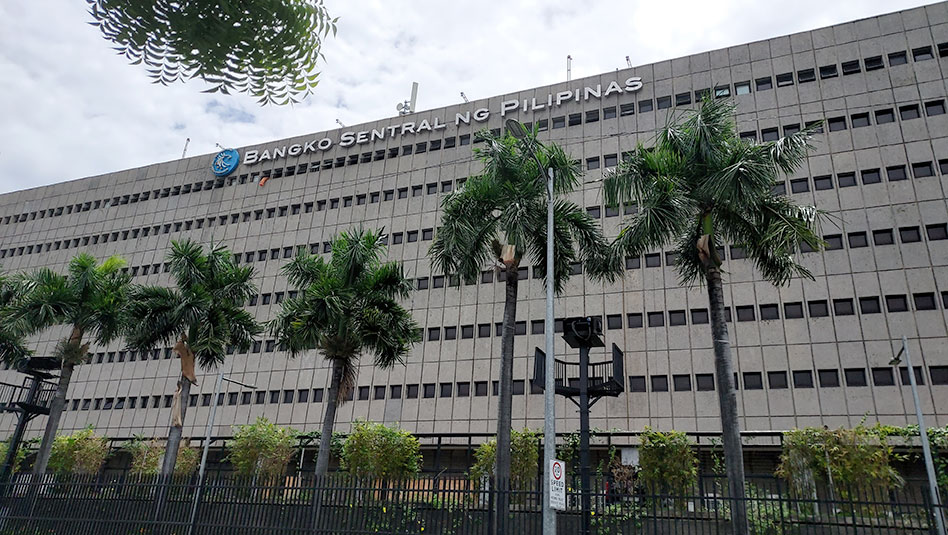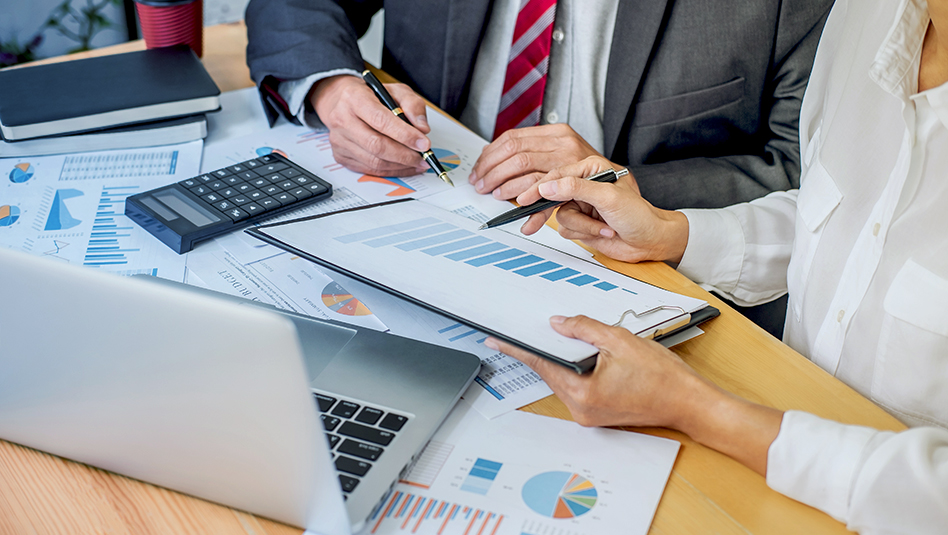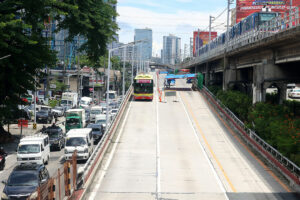




Policy Rate Updates: Closer to BSP’s Goldilocks moment
 DOWNLOAD
DOWNLOAD

Inflation Update: Speeds up but remains below target
 DOWNLOAD
DOWNLOAD

Monthly Economic Update: Fed back on track
 DOWNLOAD
DOWNLOAD


PHL surprises with 6.3% GDP growth

The Philippine economy expanded faster than expected in the second quarter, as higher government spending and investments offset “anemic” household consumption, government data showed.
Preliminary data released by the Philippine Statistics Authority (PSA) showed gross domestic product (GDP) expanded by an annual 6.3% in the April-to-June period, the fastest in five quarters or since the 6.4% in the first quarter of 2023.
It was stronger than the revised 5.8% growth in the first quarter and 4.3% in the second quarter of 2023.
 It also beat the 6% median forecast in a BusinessWorld poll of 19 economists last week.
It also beat the 6% median forecast in a BusinessWorld poll of 19 economists last week.
On a seasonally adjusted quarter-on-quarter basis, the country’s GDP expanded by 0.5%, slowing from 1.1%.
National Economic and Development Authority (NEDA) Secretary Arsenio M. Balisacan said the second-quarter GDP print kept the Philippines among Asia’s best-performing economies.
At 6.3%, the Philippines’ GDP growth was the second-fastest in the April-to-June period, only behind Vietnam (6.9%). It was ahead of Malaysia (5.8%), Indonesia (5%) and China (4.7%).
“While these numbers are encouraging, our growth performance could have been even more impactful on all Filipinos if not for the high inflation and interest rates the country experienced,” Mr. Balisacan said at a news briefing on Thursday.
For the first half, GDP growth averaged 6%, hitting the low end of the government’s target of 6%-7% this year.
“In the second half, (the economy) would have to grow by [at least] 6% to fall within that range of the target,” Mr. Balisacan said.
Among the main contributors to growth were construction (16%); wholesale and retail trade, repair of motor vehicles and motorcycles (5.8%), and financial and insurance activities (8.2%).
“On the demand side, the acceleration in GDP growth was driven by a significant increase in total investments by 11.5%, fueled by robust construction activities,” Mr. Balisacan said.
Gross capital formation, the investment component of the economy, grew by 11.5% on the second quarter, faster than the 0.5% growth in the previous quarter and 0.7% a year ago.
Public construction grew by 21.8% in the second quarter, faster than the 12.1% a year ago as the government ramped up infrastructure and rehabilitation projects. Private construction also rose by 9.9%, faster than the 5.3% a year ago, with commercial construction increasing by 13.6%.
“Our impressive growth performance clearly demonstrates that infrastructure is our way forward. We need to build more, build better, and build faster so that Filipinos can reap the benefits of these high-impact projects at the soonest possible time,” Finance Secretary Ralph G. Recto said in a separate statement.
Government spending rose by 10.7%, faster than the 1.7% in the previous quarter and a reversal from the 7.1% contraction a year earlier. This was the fastest growth since the second quarter of 2022.
‘ANEMIC’ CONSUMPTION
Household final consumption, which accounts for over 70% of the economy, rose by 4.6% year on year in the second quarter, slowing from the 5.5% growth in the same quarter in 2023.
Mr. Balisacan said household final consumption expenditure continued to be “a bit anemic” in the second quarter.
“The growth is not as strong as one would expect… Which meant that the impact of the high inflation and the high interest rates that were implemented months earlier, quarters earlier, are now being felt and are likely to continue,” he said.
The PSA said spending on health, recreation and restaurants remained strong, but there was a decline in spending on clothing, footwear and household furnishings.
Pantheon Economics’ Chief Emerging Asia Economist Miguel Chanco said household spending fell by 0.1% quarter on quarter, extending the 0.2% dip seen in the first quarter.
 “The main story from our perspective is that private consumption — the Philippines’ primary engine — has entered a technical, if shallow, recession,” he said in a note.
“The main story from our perspective is that private consumption — the Philippines’ primary engine — has entered a technical, if shallow, recession,” he said in a note.
Mr. Chanco said household spending is expected to remain constrained by “deteriorating balance sheets and waning consumer confidence.”
“The only real bright spot in the Q2 GDP report was merchandise exports, which rose quarter on quarter for the first time in three quarters,” he said.
Exports of goods and services grew by 4.2% year on year in the second quarter, slowing from the 8.4% growth in the previous quarter and 4.7% a year earlier.
Imports also grew by an annual 5.2% in April to June from 2.2% in the first quarter and a turnaround from the 0.6% contraction a year ago.
STRONGER THAN EXPECTED
“The stronger-than-expected GDP print was probably due to a faster growth pace for both public and private construction as election-related spending has already begun way ahead of the May 2025 midterm elections,” Bank of the Philippine Islands (BPI) Lead Economist Emilio S. Neri, Jr. said in an e-mail.
However, Mr. Neri noted the GDP data suggest that the second-half and full-year 2024 growth are likely to fall below the government’s target for the year.
Shivaan Tandon, Capital Economics markets economist, said that year-on-year GDP growth picked up due to favorable base effects.
“The latest data suggest that after a year of resilience amid tight monetary policy and high inflation, domestic demand has now come under pressure and we expect this weakness to persist in the near term,” he said in a research note.
While easing inflation should support private consumption, Mr. Tandon said the boost to real incomes would be offset by the slowdown in remittances.
Sunny Liu, lead economist at Oxford Economics, said GDP could expand by 5.8% this year, improving from the 5.5% GDP growth in 2023.
“However, we remain wary of the possible real impact if the recent volatility in global markets persists. There are downside risks to our forecasts,” she said in a research note.
HSBC ASEAN (Association of Southeast Asian Nations) economist Aris D. Dacanay said in a research note that GDP growth was in line with expectations, but private demand remained weak.
“Consumers might still be reeling in their expenses from the brunt of high inflation while private investors likely delayed some of their investment projects due to high interest rates,” he said.
TO CUT OR NOT
Meanwhile, ANZ Research economist Arindam Chakraborty and Head of Asia Research Khoon Goh said investment growth will be the main driver of growth this year, as external demand is unlikely to be robust.
‘Overall, we do not think the Q2 GDP and July inflation data together warrant an interest rate cut in next week’s policy meeting,” they said.
Inflation in July quickened to a nine-month high to 4.4% from 3.7% in June, breaching the BSP’s 2-4% target.
On the other hand, BPI’s Mr. Neri said that the probability of rate cut on Aug. 15 has slightly increased following the GDP print.
“If not in August, they can do an off-cycle reduction in early September or during their scheduled meeting in October [if monthly consumer price index] prints decline from their July and August print,” Mr. Neri said. – Abigail Marie P. Yraola, Deputy Research Head
This article originally appeared on bworldonline.com





 By BusinessWorld
By BusinessWorld